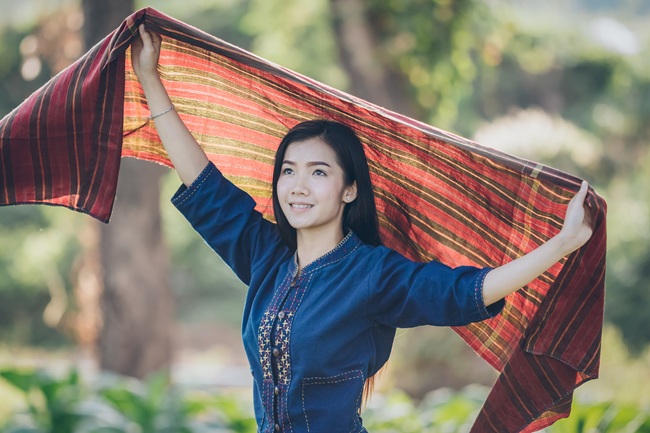Apr 26, 2025
Apr 26, 2025
Weaving A New Global Powerhouse
Can a nation’s economic ascent be woven into the fabric of its textiles? Can an industry that once thrived on necessity now define luxury, sustainability, and global leadership?
A decade ago, India’s textile industry was driven by necessity, not indulgence. Shopping habits were predictable — new clothes for festivals, carefully planned purchases, and a conservative approach to spending. Luxury brands were admired from a distance, and fashion was a privilege of the elite. Fast forward to today: India, with a booming middle class of over 350 million people and a population exceeding 1.42 billion, has transformed into a thriving consumer powerhouse.

The textile industry, once a necessity-driven sector, has now become a symbol of aspiration, identity, and global influence.
From Survival to Style: The Transformation of India’s Textile Industry
India’s textile industry is no longer just about cotton and silk; it is about innovation, sustainability, and cultural revival. The numbers tell a compelling story:
This phenomenal growth is fueled by rising disposable incomes, an expanding digital economy, and government-backed initiatives like Atmanirbhar Bharat and Production-Linked Incentives (PLI) schemes. The shift is not just quantitative but deeply cultural — Indian consumers are now seeking quality, exclusivity, and brand value in their textile choices.
Luxury & Heritage: The New Face of Indian Textiles
Once a Western concept, luxury fashion is now a way of life for Indian consumers. India’s affinity for homegrown brands is evident in the rise of domestic fashion houses like Sabyasachi, Ritu Kumar, and Manish Malhotra, which now compete with international luxury labels.
Ethnic fashion, once limited to weddings and festivals, is making a grand comeback. The $6 billion wedding fashion industry is witnessing a surge in demand for handwoven Banarasi silks, intricate Kanjeevarams, and bespoke designs celebrating India’s textile heritage.
Beyond fashion, the transformation extends to home décor and furnishings, where handcrafted textiles are seeing a massive resurgence. Between 2019 and 2024, retail fabric prices surged by 30%, signaling a demand shift towards artisan-made, sustainable, and exclusive textiles.
The Global Rise of India’s Textile Leadership
India’s textile industry is not just about meeting domestic demand — it is about leading the global market. The industry is set to dominate sectors such as:
The “Make in India” and “Vocal for Local” campaigns have fueled this momentum, positioning India as a global textile innovation hub, not just a manufacturing giant.
How AI & Technology are Weaving The Future
With the rapid integration of AI, automation, and smart textiles, India’s textile industry is poised for its next revolution. AI-driven fashion analytics, predictive demand forecasting, and automated weaving technologies are optimizing production efficiency while minimizing waste.
For example, companies like Reliance, Aditya Birla, and Raymond are leveraging AI to create smart fabrics that adapt to climate conditions, offering a fusion of functionality and fashion.
Beyond Consumption: The Future of India’s Textile Dominance
India’s rise as a textile consumer powerhouse is not just about what is being bought — it’s about what is being valued. The Indian textile industry is no longer seen as a global supplier but as a tastemaker for the world.
As India moves towards a $5 trillion economy, the textile industry will play a pivotal role in defining its global narrative. With increasing purchasing power, a cultural revival of heritage textiles, and a commitment to sustainability, India is set to not just lead but redefine the future of global fashion and textile commerce.
Final Thought: The Future Is In Our Fabric
Will India shape the world’s textile future or merely be a part of it? Will its legacy as an artisan hub fuel its leadership in the luxury market? The choices Indian consumers and businesses make today will determine whether India remains a player or emerges as the undisputed leader in the global textile revolution. The world is watching. Are we ready to weave history?
Image (c) istock.com
19-Apr-2025
More by : P. Mohan Chandran